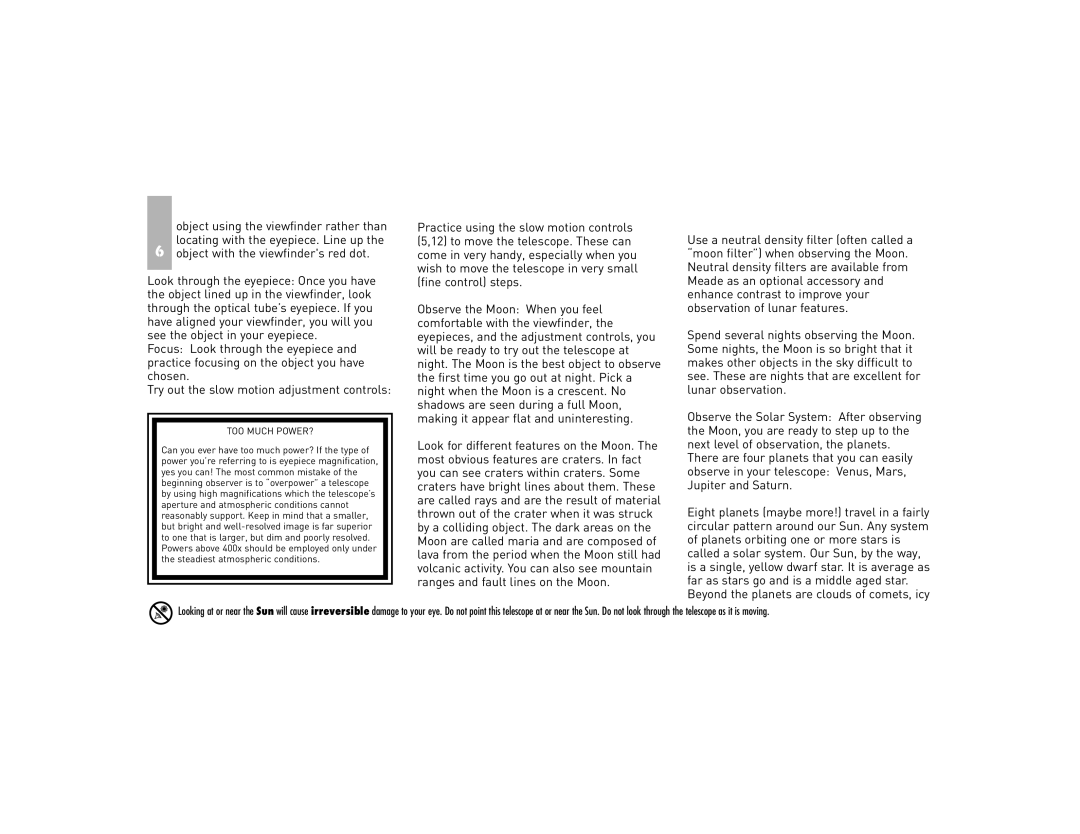NG70-SM specifications
The Meade NG70-SM is an excellent entry-level telescope designed for both novice astronomers and hobbyists. This telescope combines quality optics with user-friendly features, making it an ideal choice for anyone looking to explore the wonders of the night sky.One of the standout features of the NG70-SM is its 70mm aperture. This aperture size strikes a perfect balance between portability and light-gathering power. The telescope allows users to observe celestial objects in great detail, providing a clear view of the Moon, planets, and even some deep-sky objects like star clusters and nebulae. The optics of the NG70-SM are fully coated to enhance light transmission, ensuring bright and sharp images.
The telescope is equipped with a sturdy mount that offers smooth and precise movements, which is essential for tracking celestial objects across the sky. The mount features both altitude and azimuth adjustments, allowing users to easily find and follow objects. Additionally, the NG70-SM comes with a stable tripod, providing a solid base during observation sessions.
Another notable characteristic of this telescope is its simplicity in setup and use. The NG70-SM is designed with beginners in mind, making it easy to set up without needing complex tools or extensive knowledge of astronomy. The telescope includes a simple manual that guides users through initial assembly, ensuring a hassle-free experience.
The Meade NG70-SM also features a 1.25-inch focuser, which is compatible with various eyepieces and accessories, enabling users to customize their viewing experience. The telescope typically comes with a couple of eyepieces, offering different magnifications to suit different astronomical targets. The addition of a red dot finder enhances aiming accuracy, allowing users to quickly locate objects in the sky.
Portability is another advantage of the NG70-SM, as it is lightweight and easy to transport. Whether going to a dark site for better stargazing or attending an astronomy club event, the telescope can be easily carried, making it a convenient option for those who wish to explore new environments.
In conclusion, the Meade NG70-SM combines quality optics, user-friendly features, and portability, making it an excellent choice for those beginning their journey into astronomy. Its combination of a 70mm aperture, a stable mount, and ease of use provides an immersive experience that inspires curiosity and a love for the cosmos.

